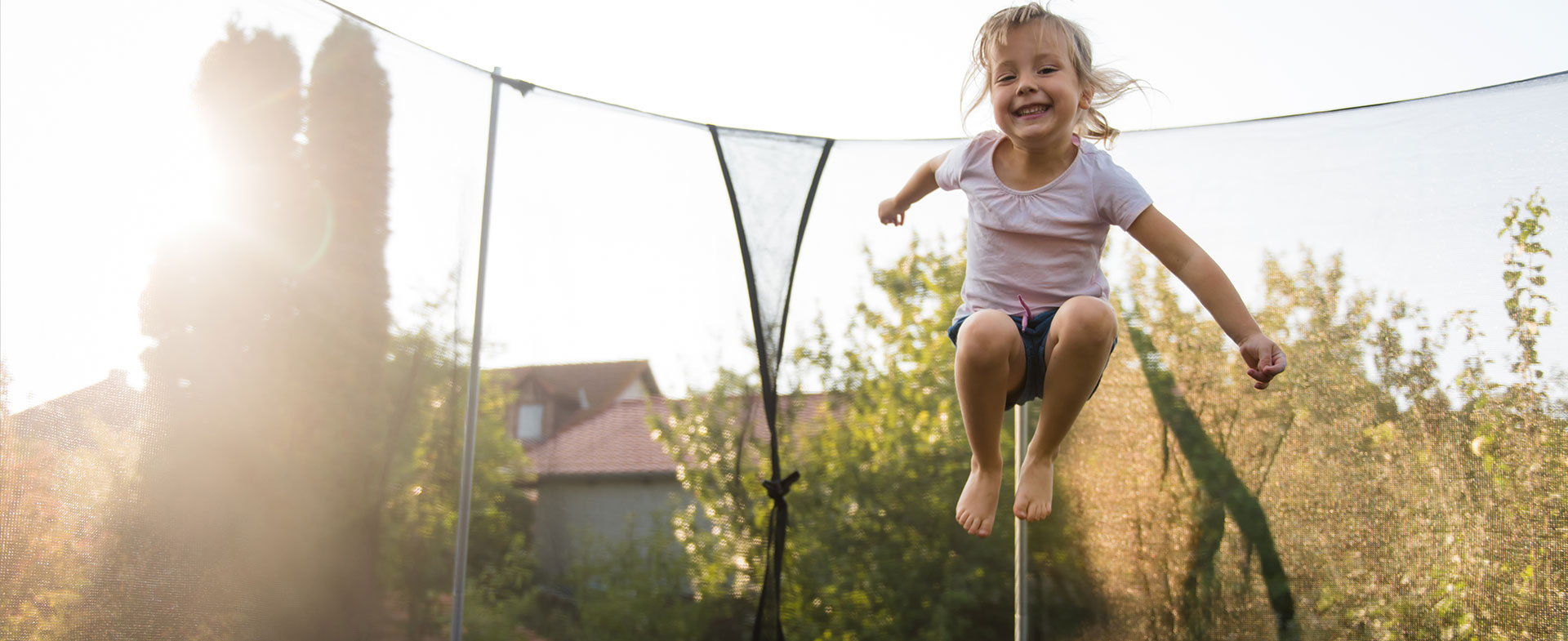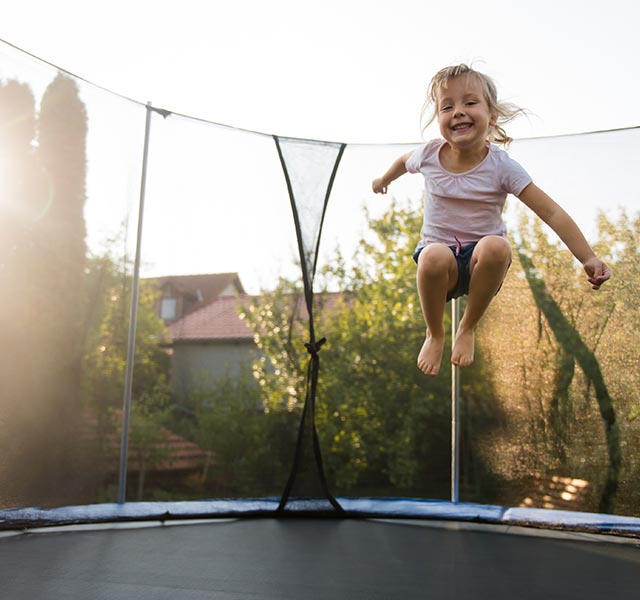We wait all year for summer, when we can spend our days swimming, picnicking, playing sports, biking and just soaking up some serotonin-inducing sun. But while the carefree summer months are full of fun activities, these same activities can be dangerous if you’re not taking proper precautions.
“Many people are admitted to the ER for summer-related injuries,” says Christopher Lewandowski, M.D., an emergency medicine physician at Henry Ford Health. “But by being aware and playing it safe, you can have a fun summer—without a trip to the hospital.”
Here, how to make eight summer activities safer.
1. Using fireworks
The risk: “We don’t see a lot of firework injuries, but when they do happen, they’re pretty severe,” says Dr. Lewandowski. “Fireworks can do a tremendous amount of damage and remove hands and fingers.”
The fix: Your safest option is leaving fireworks to the professionals. If you do set off fireworks, however, make sure you’re in a wide, open space—not a residential area. Have a fire extinguisher and water on hand to put out any possible fires and make sure you don’t have any fire accelerants like gasoline or charcoal nearby.
Also, don’t use potent fireworks (like the ones used in city firework displays). “They’re a huge fire hazard—and the loudness of the explosion can cause hearing loss,” says Dr. Lewandowski.

That said, even smaller fireworks and sparklers are dangerous. “Sparklers can get up to 3,000 degrees Fahrenheit,” says Dr. Lewandowski. “If you grab them in the wrong place, they can instantly cause severe burns. Personally, I would avoid them, especially with kids. A lot of this is commons sense, but ensure you have a responsible party around fireworks and sparklers and be vigilant—especially if children are there.”
2. Having a barbecue
The risk: Hamburgers, hot dogs, corn on the cob—there’s nothing like a summer barbecue. But if you’re not careful, burns, smoke inhalation and other injuries can occur.
The fix: If you have a gas barbecue, ensure the gas connection is made properly. If you have any concerns there could be a gas leak, don’t use it. “And be careful about the accumulation of grease so it doesn’t cause a grease fire, as the associated burns can be very severe,” says Dr. Lewandowski.
Using a charcoal grill? Never use gas to start charcoal fires. “Gas evaporates quickly and it could create a vapor cloud and cause an explosion,” says Dr. Lewandowski.
If you’re barbecuing on a smaller grill, make sure it’s on a stable surface so it doesn’t tip over. And regardless of the grill you use, ensure it is in a well-ventilated place. You should only grill outside to avoid smoke inhalation and carbon monoxide poisoning.
Finally, if you’re using knives, use caution. “If you cut yourself, apply pressure to stop the bleeding," says Dr. Lewandowski. "Then clean out the cut with soap and water and apply an antibacterial ointment, as the meat-contaminated knife could cause an infection. You may also need oral antibiotics. If the cut is significant enough, stitches may also be necessary.”
3. Spending time in the sun
The risk: Basking in the sun’s rays might feel good, but getting too much sun can lead to sunburns and skin cancer. Not to mention the fact that burns are also just uncomfortable and painful—especially if you get a second-degree burn.
The fix: To protect your skin, wear a broad-spectrum sunscreen with at least SPF 30. (Broad spectrum means it protects against both UVA and UVB rays.) Reapply every two hours—or even more frequently if you’re sweating or swimming. Wearing sunhats, sunglasses and sun protective clothing are also a good idea. And if possible, minimize your exposure to direct sunlight from 10 a.m. to 4 p.m., when the sun’s rays are at their strongest.
4. Bike riding
The risk: Long bike rides (preferably with an ice cream stop in the middle) spell quintessential summer. But according to Michigan State Police data, there are more than a thousand bicycle crashes each year in Michigan—and that’s not including bike injuries that go unreported.
The fix: Wear a bike helmet that is certified by the Consumer Product Safety Commission (CPSC) and specifically designed for biking. Make sure it fits properly. The straps should be snug and fastened—a helmet that is too big will not give you adequate protection. Whether riding during the day or night, it’s also a good idea to wear bright, neon colors to ensure drivers see you. (Even better if you also wear flashing lights or reflective tape.) “And just as you should while driving a car, always keep your eyes on the road,” says Dr. Lewandowski.
5. Swimming and boating
The risk: Spending time on the water is one of the most popular summer activities, but the fact that around 400,000 Americans die each year from swimming is a sobering statistic.
The fix: Pinpoint rescue rings, life jackets and automated external defibrillators (AEDs) as soon as you get to the pool and ensure children are supervised. “While supervising, refrain from drinking alcohol and avoid all distractions like social media, texting, phone conversations—anything that will pull your attention away from the children,” says Dr. Lewandowski. “And never dive in shallow water—it can lead to spinal cord injuries and paralysis.”
Alcohol plays a role in most adult deaths associated with water recreation, including boating accidents. Be responsible and pay attention to do-not-swim warnings, strong rip tides and currents.
6. Having a bonfire
The risk: It doesn’t get much better than roasting marshmallows under the stars—but according to the National Fire Protection Association, thousands of people end up in the emergency room with burn injuries every year.
The fix: Before building a bonfire, ask your local fire department if they’re allowed. And if they are, ensure the fire you build is in a wide, open space and at least 25 feet away from buildings. Don’t use gasoline or anything that’s combustible to build your fire. It’s also not a good idea to build a fire when it’s windy and dry, as these conditions make it easier for the fire to become unmanageable. Roasting marshmallows? Never shake the rod, as this can create a flying flame.
“Never leave your campfire unattended, and if you have children or pets with you, watch them at all times,” adds Dr. Lewandowski. Have a hose or bucket of water on hand, and before leaving the campfire, make sure the fire is completely put out—no flickering flames in sight.
7. Doing home improvement projects
The risk: When warm weather strikes, many people decide the time is right to get started on home improvement projects. But DIYers need to take the same precautions as any professional, or the injuries could be severe.
The fix: “First and foremost, always wear your personal protective equipment (PPE),” says Dr. Lewandowski. “Whether that’s goggles, gloves, a face mask, helmet—it’s so important to keep yourself protected. And always read the directions carefully before using anything, whether it’s a tool or chemical.”
If you’re sanding, wear a filtered mask so you don’t inhale dust. Breathing in lots of chemicals or dust can cause lung infections and contribute to lung cancer. It’s also important to wear protective goggles when creating dust and when using any sort of tool—especially pressure washers. (Never point them at yourself or anyone else, as they can cause severe injuries.)
DIY projects often involve high heights: repairing the roof, cleaning gutters, trimming trees. To avoid falls, wear a safety harness and ensure your ladder is positioned firmly on the ground. Have someone hold the base of the ladder to steady it.
Finally, if you’re sawing, know that getting deep cuts are a real threat. Make sure your tools are sharpened and wear thick worker’s gloves, should you have a slipup.
8. Jumping on a trampoline
The risk: While kids love to jump on a trampoline, the number of injuries that occur on trampolines is similar to the number of injuries that occur in the swimming pool. The American Academy of Pediatrics warns that just as much caution should be taken on trampolines as in the pool.
The fix: “Some trampoline injuries can lead to broken bones; others can lead to neurological damage,” says Dr. Lewandowski. “It’s extremely important to supervise your children.” Set ground rules: no flipping or acrobatics, no jumping off the trampoline, only one child allowed on the trampoline at a time and jump only in the center of the trampoline.
“It’s also a good idea to have a safety net installed around the edges of the trampoline,” says Dr. Lewandowski. To lessen the chance of slipping, socks and shoes should be removed before jumping. As for the trampoline itself, make sure you place it in an area that’s far away from other trees and structures, and ensure it’s on level grass, not hard concrete. An ounce of prevention is worth a pound of cure.
Reviewed by Christopher Lewandowski, M.D., an emergency medicine physician at Henry Ford Health.



